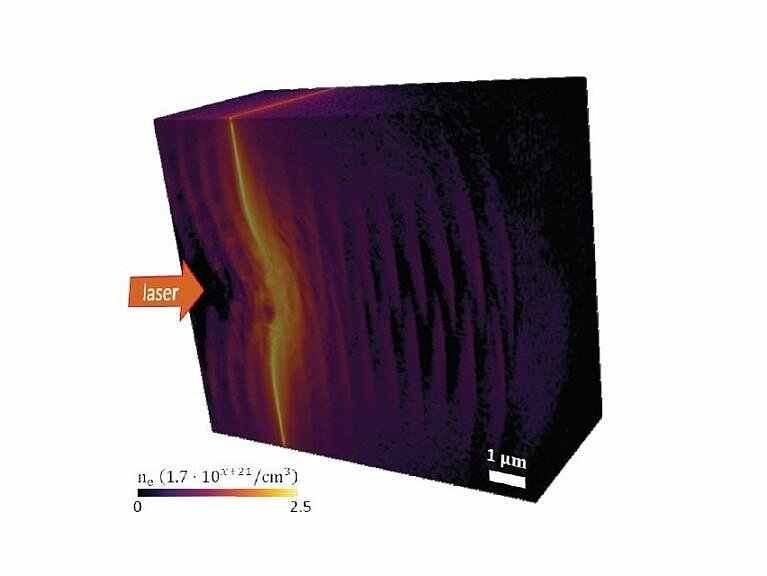December 15, 2020 - by CSCS
When we think of particle accelerators today, our minds tend to conjure up vast structures spanning multiple countries, such as the Large Hadron Collider at CERN. But what if we were able to take the power of these devices and shrink them down to the size of a room?
Laser-powered acceleration of particles holds the potential to enable such compact machines.To further the technology, scientists at the Helmholtz Zentrum Dresden-Rossendorf (HZDR) have been investigating the acceleration of ions using ultra-intense lasers with simulations carried out on the “Piz Daint” supercomputer at CSCS. “Our simulations are linked very closely with experimental work that is carried out by our collaborators and will help them to optimise their lasers with a rational approach”, says Thomas Kluge, a scientist in the group of Michael Bussmann at HZDR.
The scientists’ simulations were the first ever to include an important pre-pulse of the laser beam that occurs just a few hundred femtoseconds before the main laser pulse. Indeed, the results have shown that there is an ideal amount of light leakage from this pre-pulse to optimally accelerate ions — a finding that will likely help experimentalists to improve the ion beams that they produce.
Previous simulations of such lasers using less powerful computers had to rely on certain initial assumptions about the physical processes and were therefore not able to fully reflect the dynamics of the process. Only now could the scientists identify these details that will boost further optimisation of the technology. As Kluge points out, the collaboration with researchers at CSCS throughout the project has helped the team to develop workflows that will also benefit other groups working in this field.
This project was enabled by a PRACE allocation. Read the full story on the PRACE website >
